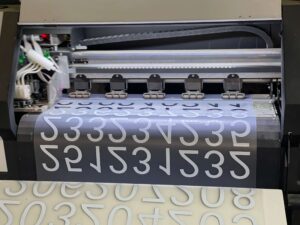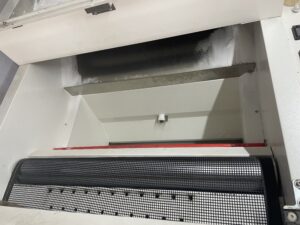Heat transfer and screen printing.
The continuous innovation in clothing decoration technology has injected new vitality into the fashion industry. Among them, heat transfer and screen printing, as two highly popular decorative techniques, have gained favor from both consumers and designers for their unique effects and widespread applications.
Heat Transfer Technology:
Heat transfer technology is a method of imprinting patterns or images onto textiles through the transfer of heat. This technique utilizes heat-sensitive materials, typically a special heat transfer film, to transfer pre-designed patterns or text onto the surface of garments. This process is simple and efficient, applicable to various textile materials such as T-shirts and sportswear. Designers can achieve intricate patterns and vibrant colors through heat transfer technology, enhancing the garments with a sense of depth and uniqueness. Furthermore, the durability of heat transfer technology is widely recognized, ensuring that patterns resist fading, maintaining a lasting aesthetic appeal.
patterns or images onto textiles through the transfer of heat. This technique utilizes heat-sensitive materials, typically a special heat transfer film, to transfer pre-designed patterns or text onto the surface of garments. This process is simple and efficient, applicable to various textile materials such as T-shirts and sportswear. Designers can achieve intricate patterns and vibrant colors through heat transfer technology, enhancing the garments with a sense of depth and uniqueness. Furthermore, the durability of heat transfer technology is widely recognized, ensuring that patterns resist fading, maintaining a lasting aesthetic appeal.
Screen Printing:
In comparison to heat transfer, screen printing is more suitable for large-area patterns and designs  with rich colors. The screen printing process involves coating a frame with fine mesh with ink and using pressure to push the ink through the mesh onto the garment. This technique allows for the creation of complex patterns, and designers have the flexibility to experiment with a wide range of color variations due to ink selection. Screen printing finds extensive applications in casual wear such as hoodies and hats, infusing these garments with additional creativity and artistic elements. Moreover, the relatively low cost of screen printing makes it an ideal choice for large-scale production.
with rich colors. The screen printing process involves coating a frame with fine mesh with ink and using pressure to push the ink through the mesh onto the garment. This technique allows for the creation of complex patterns, and designers have the flexibility to experiment with a wide range of color variations due to ink selection. Screen printing finds extensive applications in casual wear such as hoodies and hats, infusing these garments with additional creativity and artistic elements. Moreover, the relatively low cost of screen printing makes it an ideal choice for large-scale production.